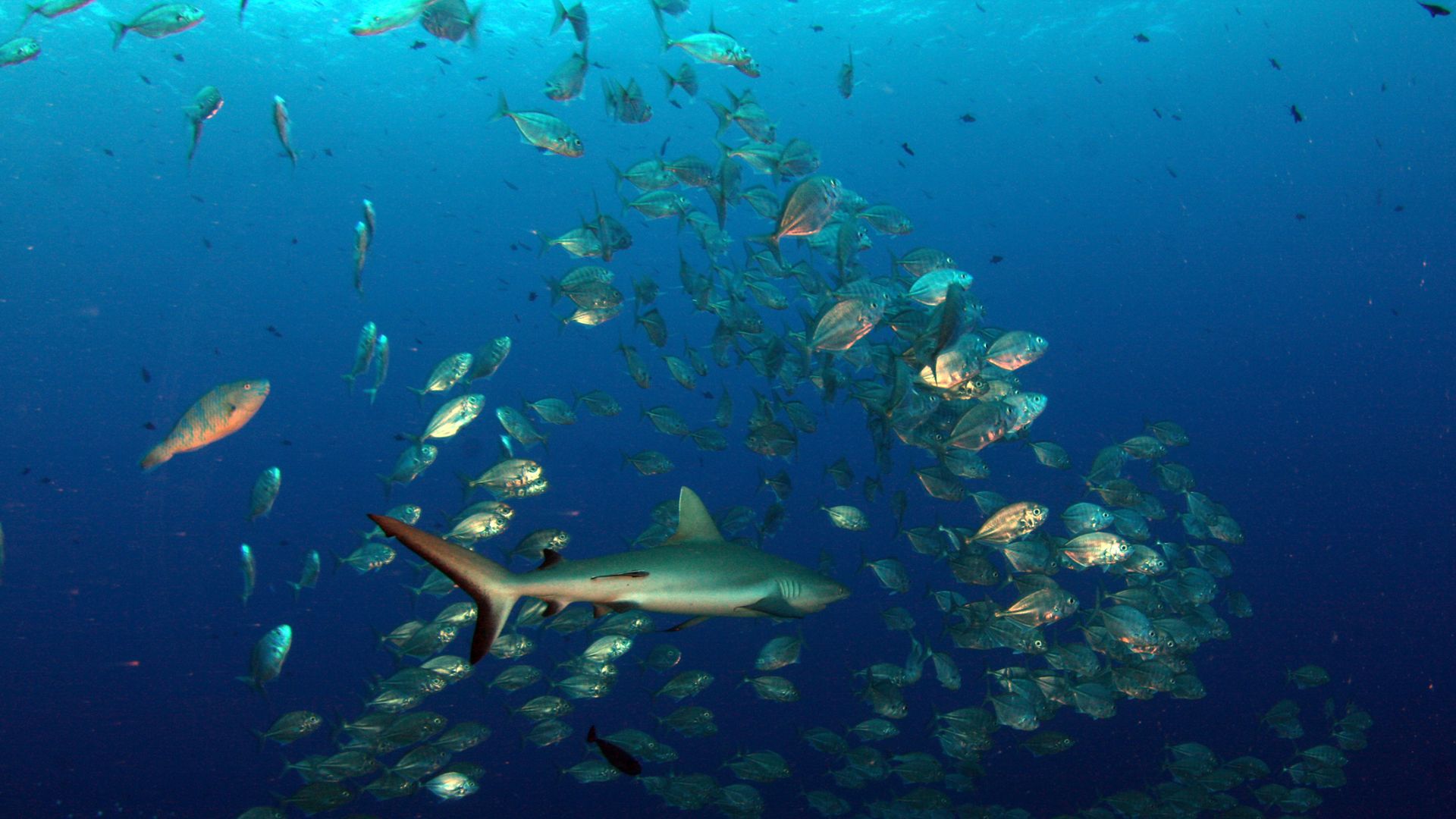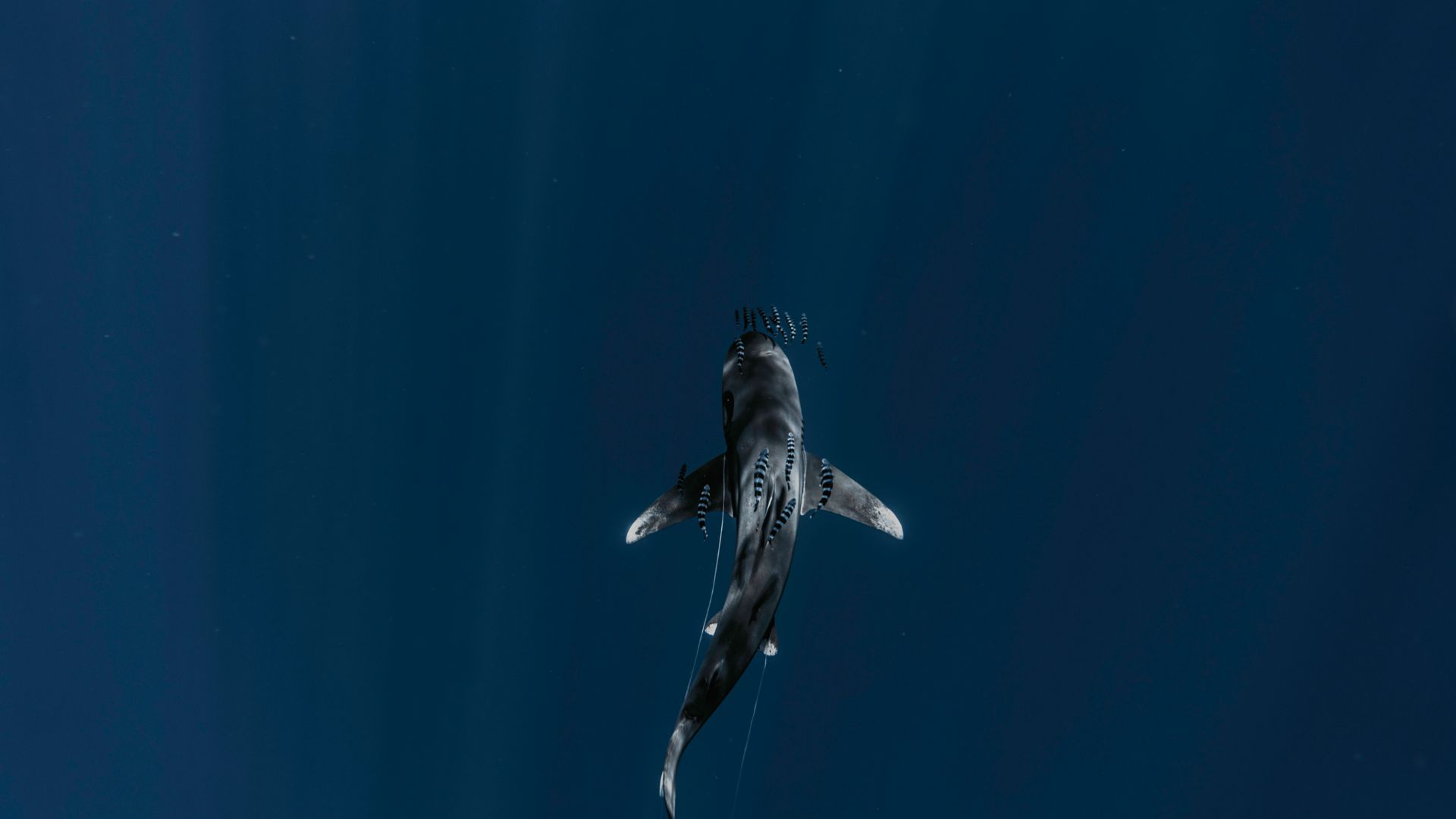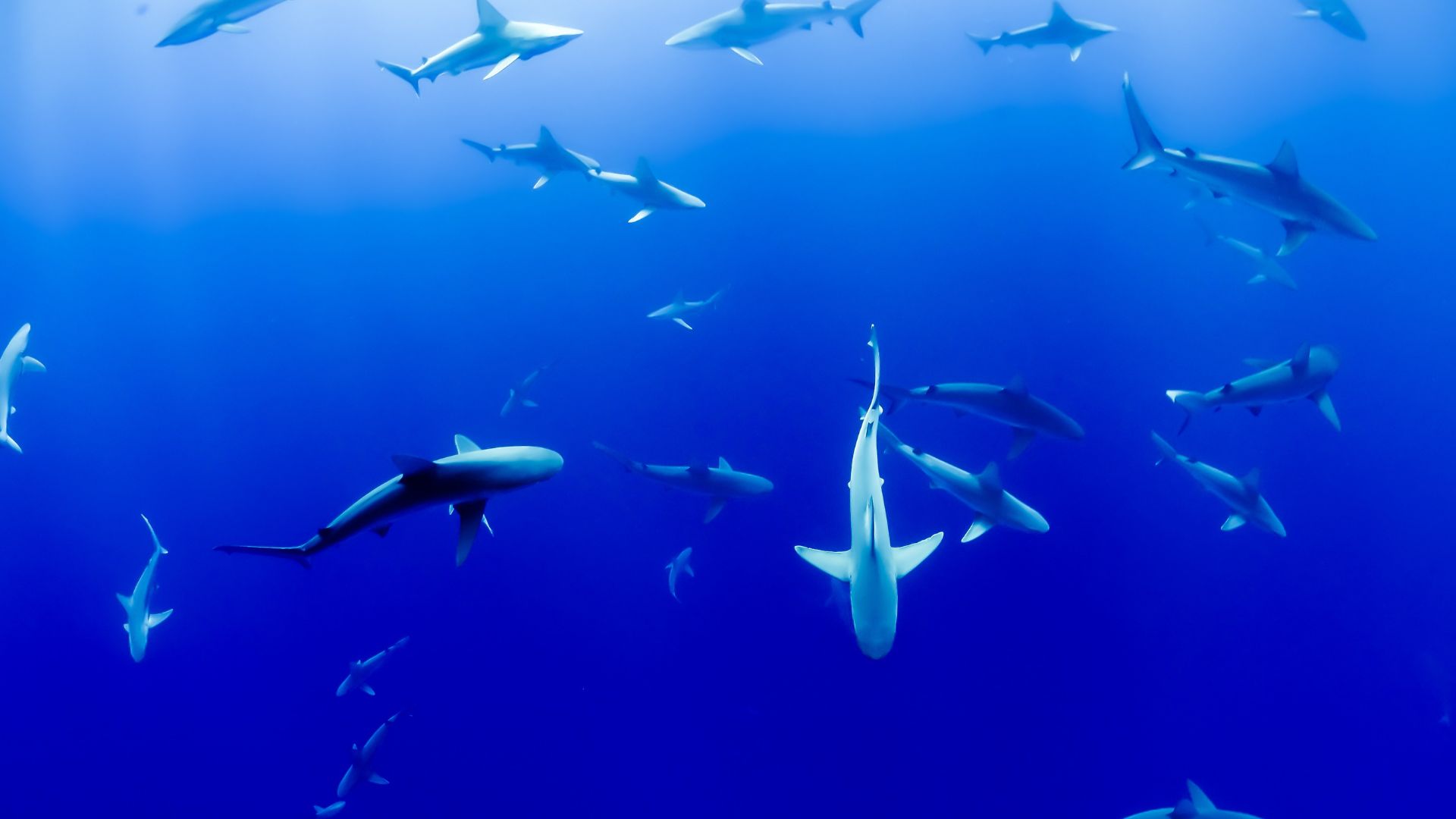
Myth vs. Reality: Debunking common shark myths
Sharks are among the most misunderstood creatures in the ocean. Their portrayal in movies, sensationalised media, and even social media often leads to a widespread fear of these magnificent animals. From the infamous Jaws to countless documentaries that emphasise the terrifying side of sharks, it’s no wonder that many people associate sharks with danger. But much of what we believe about sharks is based on myths, and it’s time to set the record straight.
In this article, we’ll debunk some of the most common shark myths and uncover the reality behind these fascinating predators:
- Sharks are bloodthirsty predators
- Sharks are dangerous to all swimmers
- Sharks don’t have any purpose in the ecosystem
- Sharks are all the same
- Unjustified fear: Sharks are incredible animals
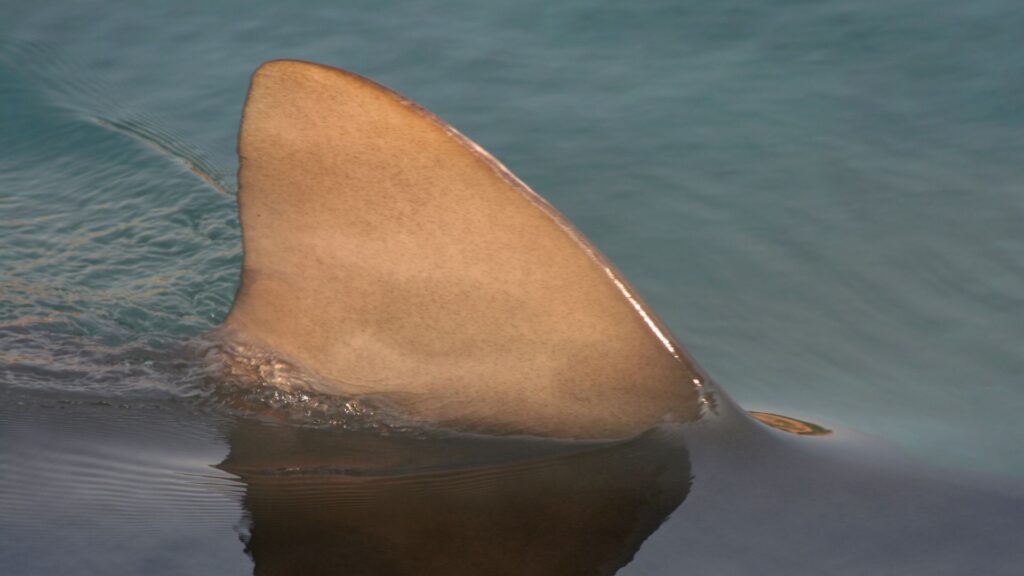
Sharks are bloodthirsty predators
One of the most widespread myths about sharks is that they are bloodthirsty creatures, attacking anything that comes near. This belief has been heavily influenced by movies, where sharks are often portrayed as relentless hunters seeking out human prey. However, this could not be further from the truth.
Myth: Sharks will attack anything in sight, driven by an insatiable thirst for blood.
Reality: In reality, sharks are highly calculated hunters with a keen sense of curiosity rather than aggression. While they do prey on marine mammals and fish, shark attacks on humans are incredibly rare. Most shark species, including the famous Great White, do not seek out humans as food. When a shark bites a human, it is often a case of mistaken identity, with the shark confusing the swimmer for a seal or another natural prey item. Once the shark realises it is not food, it usually swims away. Shark attacks are often a single bite, after which the shark retreats. The truth is, sharks are not out to hunt humans, and attacks are often a result of the shark’s natural curiosity.
Sharks are dangerous to all swimmers
Another common myth is that if you swim in shark-prone waters, you are guaranteed to be attacked. This idea is especially prevalent in areas with high-profile shark populations, such as Australia or South Africa, but the statistics tell a very different story.
Myth: Swimming in shark-prone waters is a death sentence.
Reality: Shark attacks are incredibly rare, especially when compared to other dangers that swimmers face, such as drowning, rip currents, or even being stung by jellyfish. According to the International Shark Attack File, there are fewer than 100 confirmed shark attacks worldwide each year, and the vast majority of these are non-fatal. Most shark species are not dangerous to humans, and many sharks prefer to stay in deeper waters, far from the shallow areas where humans typically swim. Swimmers can reduce the risk of a shark encounter by following simple safety guidelines, such as avoiding swimming at dusk or dawn when sharks are most active, staying in groups, and staying clear of schools of fish or large predators like seals.
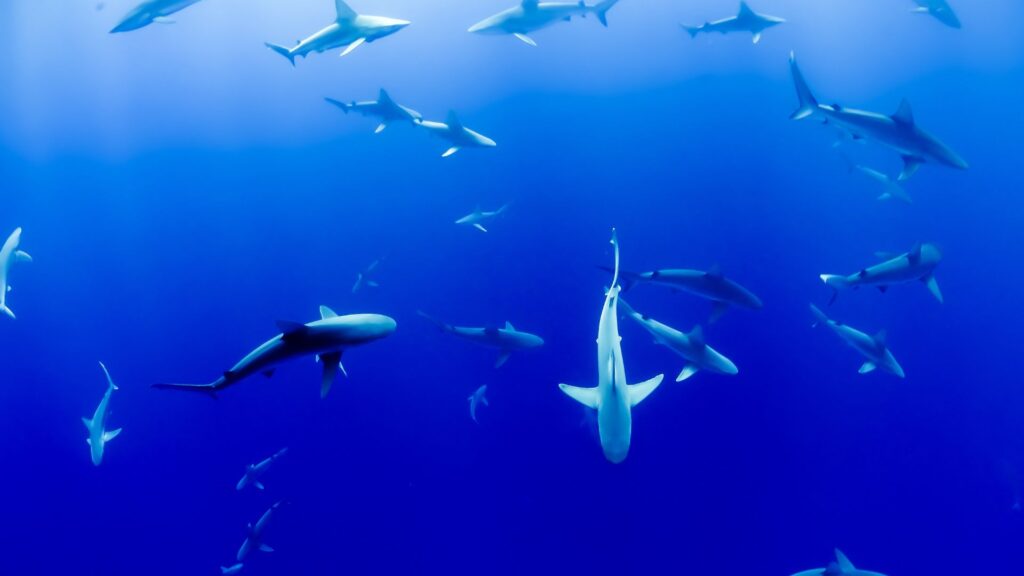
Sharks don’t have any purpose in the ecosystem
Sharks are often seen purely as dangerous creatures, with many people believing that they are nothing more than ocean bullies. This perception overlooks the vital role sharks play in maintaining healthy marine ecosystems.
Myth: Sharks are simply dangerous, without any ecological role.
Reality: Sharks are apex predators, meaning they sit at the top of the food chain in the ocean. Their presence helps to regulate the populations of other marine species, ensuring that no one species dominates the ecosystem. For example, sharks often prey on weak, sick, or injured fish, which helps to keep populations of prey species healthy by removing individuals who might otherwise spread disease. This “culling” process prevents overpopulation, which could lead to depletion of resources in the ecosystem. Without sharks, the balance of the ocean’s food chain would be disrupted, causing cascading effects on other marine life. In fact, studies have shown that when shark populations decline, it can lead to an overabundance of smaller fish species, which in turn harms coral reefs and other important habitats.
Sharks are all the same
Many people view sharks as a homogenous group of creatures, all behaving in the same way. However, this is a significant oversimplification of the diversity of sharks in the ocean.
Myth: All sharks behave the same.
Reality: In reality, sharks vary greatly in size, behaviour, and habitat. There are more than 500 species of sharks, ranging from the tiny 17-centimetre-diameter Dwarf Lantern Shark to the massive 18-metre-long Whale Shark. Their behaviours differ depending on their species, and their hunting techniques, diets, and social structures can be vastly different. Some sharks, like the Great White and Bull Shark, are known for their aggressive hunting tactics, while others, like the Whale Shark and Basking Shark, are filter feeders that feed on plankton and small fish. Sharks also inhabit different parts of the ocean; some live near the coast, while others dwell in the deep sea. Their habitats, diets, and interactions with humans all vary, making it essential to recognise the incredible diversity among sharks.
Unjustified fear: Sharks are incredible animals
The myths surrounding sharks have created an unjustified fear of these incredible creatures, but the reality is that sharks are not the mindless, bloodthirsty monsters they’re often made out to be. In fact, they are essential for the health of marine ecosystems and play a crucial role in maintaining the balance of life in the ocean. The vast majority of sharks pose no threat to humans, and most shark attacks are the result of mistaken identity or curiosity. By debunking these common myths, we can foster a greater understanding of sharks and their importance in our oceans.
Let’s recap one more time:
- Shark attacks on humans are rare and usually the result of mistaken identity or curiosity, not a desire to hunt humans.
- Shark attacks are extremely rare, and simple precautions can minimise the risk when swimming in shark-prone waters.
- As apex predators, sharks help regulate marine populations and maintain healthy ecosystems by removing weak or diseased individuals.
- There are over 500 shark species, each with different behaviours, sizes, habitats, and diets, ranging from aggressive hunters to gentle filter feeders.
- By debunking myths and understanding sharks’ ecological value, we can promote their conservation and ensure the health of ocean ecosystems.
“Sharks are not the villains of the ocean, but its silent guardians, maintaining balance and health beneath the waves.”
As the world’s oceans continue to face challenges from overfishing, pollution, and climate change, it’s more important than ever to recognise the value of sharks and protect them for future generations. Spreading facts instead of fear will help us conserve these magnificent creatures and ensure the health of our marine ecosystems for years to come. So, the next time you hear someone mention sharks, remember: it’s time to separate myth from reality and embrace these remarkable creatures for the vital role they play in the ocean’s delicate balance.

